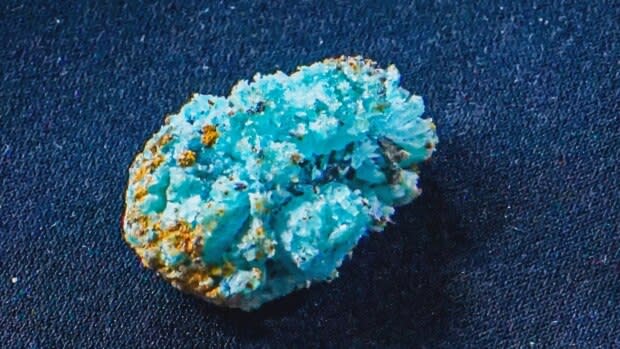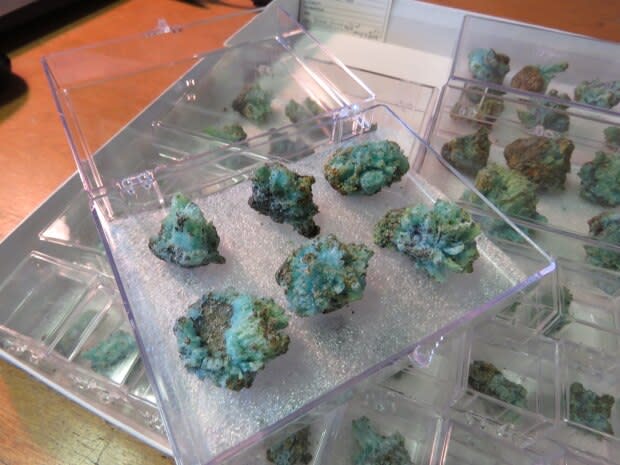Rare mineral discovered near Nepisiguit Falls
A Bathurst man who collects minerals as a hobby stumbled across a rare substance that has never been recorded in the New Brunswick Museum's archives.
Jesse Chamberlain went to a former mining site near Nepisiguit Falls in May to dig for minerals with his girlfriend.
After digging about two feet deep into the side of the hill with a small gardening tool, Chamberlain stumbled across a blue-green mineral called melanterite.
"It was the first time I ever seen that colour come out of the ground," Chamberlain said.
"I was very surprised, so I called my girlfriend over to take a look at it. We weren't sure what it was, so we collected as many samples as we could."

The couple brought the brittle substance home with them and made a post on a New Brunswick geology Facebook page, asking for leads on what the specimen might be.
Matt Stimson, assistant curator of geology and paleontology at the New Brunswick Museum, responded to Chamberlain's post and asked the mineral hobbyist if he'd be willing to donate some for analysis.
"I thought who better to give it to than the museum so they can keep it for future studies," said Chamberlain, who subsequently donated 50 samples to the museum's geology collections.

Stimson and two researchers at the University of New Brunswick's Earth Sciences department, David Lentz and Ven Reddy, banded together to study the mineral.
At first, the trio thought the substance was a mineral called chalcanthite because of its colour and shape. Like the mystery substance, chalcanthite also dissolves in water.
However, further inspection and months of analysis revealed the substance is actually melanterite, a cousin to chalcanthite.
Stimson described melanterite as an iron sulphate, a mixture of water and copper that disintegrates when submerged in liquid.

"If it's left out in the desert you're more likely to find it, but here in New Brunswick where we have a humid [and] very wet climate, the chances of it being found are not very good," Stimson said.
Melanterite can be used to detect zinc and copper deposits and is common worldwide near iron-rich sulphide deposits.
The 50 samples donated by Chamberlain are now stored at the museum in air-tight, water-sealed containers with silicon gel and desiccant to absorb moisture.
"We can take care of it here and it will survive for the next century or longer under the right conditions," Stimson said.


